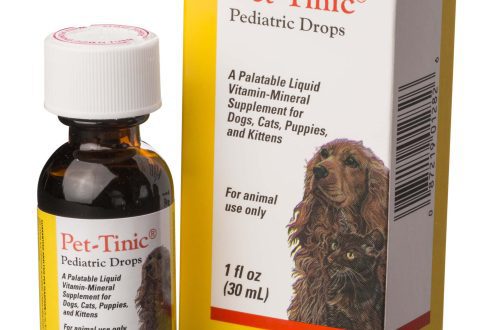
Show dog life
Dog shows become a must-attend event thanks to enchanted fans: solemn occasions, diverse personalities or beautiful dogs waltzing in circles in the fight for the title of the best.
What is the life of a show dog really like?
Contents
Meet Susan, Libby and Echo
Susan McCoy, President of the Glen Falls Kennel Club, New York, is the owner of two former show dogs. Her Scottish Setters are XNUMX year old Libby and XNUMX year old Echo.
Susan first became interested in dog shows after watching Walt Disney’s 1962 film Big Red. This is a film about a strict dog show and a carefree orphan boy who rescues an Irish Setter lost in the desert. It was Susan’s love for the movie that inspired her to get her first dog, Bridget the Irish Setter.
“Bridget was not a full-fledged show dog, but she was a wonderful pet,” says Susan. “I took her to classes and demonstrated her obedience skills, which led me to join the Kennel Club.”
Bridget, like many dogs that thrive in the company of other dogs and people, has enjoyed exhibiting. According to Susan, the learning process strengthened the bond between them.
“But you spend a lot of time with your dog,” she says. “And she has to interact with you on stage. It should be focused on you. For the animals that love it, it’s play time. They love the positive response and the praise they get.”
While most show animals go through extensive training, Susan says it’s not necessary. “I wouldn’t say it’s super important,” she said. “You have to teach your dog to walk well on a leash, maintain a proper gait, be patient with being examined and touched by strangers, and generally be well-mannered.”
What do puppies need to learn? Those who have gone through puppy school will be surprised to know that it is all about the very basics.
“They don’t even need to know the sit command,” she says. – Or the command “stand”.
Not every dog can become a show dog
Libby, who was a show champion, has long since retired from the scene. But she still “works”, now as a therapy dog: she regularly accompanies Susan to schools and nursing homes.
“She helps kids learn to read,” says Susan. “And gives comfort to those who need it.”
At the same time, says Susan, Echo also had to become a show dog.
But after several shows, Susan discovered that Echo did not have the temperament for such competitions.
“Echo is a very beautiful dog, and I planned to show him at shows, but for him it turned out to be an emotional overload,” she explains. – He was uncomfortable. There was just too much: a lot of dogs, a lot of people, a lot of noise. And it was wrong to subject him to such tests just because I really wanted to.”
Susan still enjoys the shows she frequents as president of the Glen Falls Kennel Club. She especially enjoys watching the youth learn to compete.
“I think it teaches children to be responsible hosts, teaches them confidence and poise,” she says. “And it’s fun for the child and good for their relationship with the dog and their bond.”
Disadvantages of exhibition life
“However, there is a downside to the life of a show dog,” says Susan. Exhibitions require a lot of long travel, she said, and the cost of attending them is getting higher, which repels potential competitors.
Indeed, preparing dogs for the show and winning the Westminster show can cost the owner of the dog hundreds of thousands of dollars. One of the owners, who won the Westminster Show in 2006, told The New York Times that the three-year journey to this victory cost him about $700.
And if Susan simply enjoys the camaraderie during these events, there are people (including those at the Westminster Exhibition) who take them much more seriously. For example, many owners of the best show dogs hire professional dog handlers to accompany their pets to shows instead of doing it themselves. Some even hire personal groomers.
Meanwhile, researchers and animal health advocates have long been concerned about health problems in purebred dogs that meet AKC standards.
“In order to achieve the desired appearance, nurseries often turn to pure breeding, which is a type of inbreeding where direct relatives are bred, such as a grandmother and grandson. If a male wins numerous championships, he is often widely bred – a practice known as the popular father syndrome – and his genes, healthy or not, spread like wildfire throughout the breed. As a result, purebred dogs not only increase the number of hereditary diseases, but also worsen health problems in general, ”writes Claire Maldarelli for Scientific American.
It’s no secret that some contestants go too far in their quest to win. Vanity Fair has covered in detail the death of a 2015 champion dog whose owners believe it was poisoned at England’s most prestigious dog show, although this cannot be proven.
“It’s a fun sport!”
For easy-going owners like Susan, who simply loves animals, the show is nothing more than a way to spend time with your pet, meeting like-minded people, seeing interesting dogs and learning more about them.
Show fans are interested in watching owners fuss over their pets’ hairstyles, discovering new breeds (“Have you seen the American Hairless Terrier yet?”), and perhaps betting on the winner.
“It’s a fun sport,” Susan says. “No matter what breed you are, it’s a way to spend time with your dog, to be together.”
How to prepare a pet for an exhibition? If you’re interested in showing your dog, be sure to look for shows that are held near you. Not all shows are as competitive as the most prestigious ones, and they will give you the opportunity to show your favorite dog in a friendlier environment. Even if you’re not interested in showing your pet, dog shows can be a fun family activity that gives you the opportunity to learn about the different dogs in your area, plus it’s an incomparable opportunity to spend a day surrounded by a huge number of dogs!





